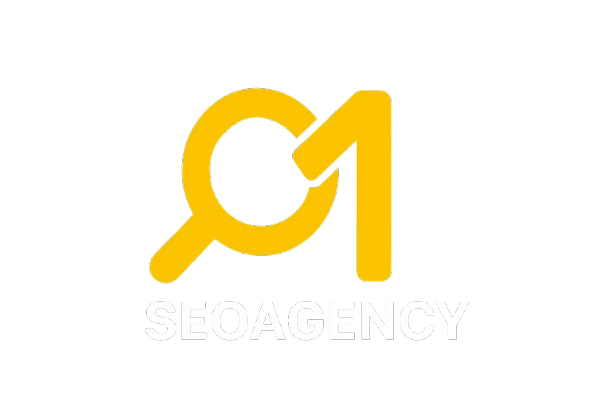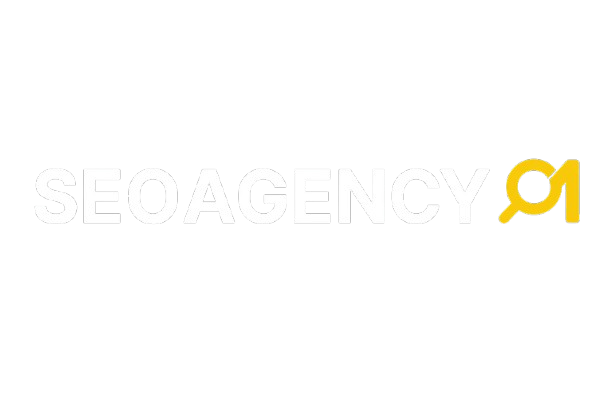Enterprise SEO: Overlooked Strategy Winning Big in 2025
Hook: Is your large business struggling to rank higher on Google? While competitors focus on basic SEO, smart companies in the USA are using enterprise SEO to dominate search results—leaving others behind.
What Is Enterprise SEO?
Enterprise SEO is a specialized approach to search engine optimization designed for large-scale businesses. Unlike standard SEO, it focuses on:
Technical optimization (site speed, crawlability, indexing)
Advanced keyword research (long-tail and semantic search terms)
Content strategy at scale (structured, high-authority content)
Data-driven decisions (using analytics to refine performance)
This method ensures that complex websites (with thousands of pages, multiple locations, or global audiences) rank higher and attract the right customers.
Businesses Must Prioritize Enterprise SEO in 2025
1. Rising Competition in Digital Markets
More businesses are investing in SEO, making top rankings harder to achieve.
Enterprise SEO helps outperform competitors with smarter strategies.
2. Complex Websites Need Advanced Fixes
Big e-commerce sites, corporate portals, and multilingual platforms often suffer from:
Broken links
Slow loading speeds
Poor mobile optimization
Enterprise SEO identifies and resolves these issues for better rankings.
3. Voice Search & AI Are Changing SEO
Google’s algorithms now prioritize natural language, user intent, and structured data.
Enterprise SEO optimizes for voice search and AI-driven queries, keeping your business ahead.
4. Local SEO for Markets
Businesses in the USA and Sharjah need location-based optimization to attract nearby customers.
Enterprise SEO includes local listings, Google My Business optimization, and geo-targeted keywords.
Why Most Companies Are Missing Out
Many large businesses still rely on outdated SEO tactics, such as:
Basic keyword stuffing (instead of semantic search optimization)
Ignoring technical SEO (leading to poor crawlability)
Not updating content (missing trending topics and user intent)
Meanwhile, brands using enterprise SEO are:
✅ Ranking for high-value keywords
✅ Generating more qualified leads
✅ Staying ahead of algorithm updates
How to Get Started with
Technical Audit – Fix errors slowing down your site.
Advanced Keyword Strategy – Target long-tail and semantic keywords.
Content Optimization – Create high-quality, structured content.
Data Tracking – Use analytics to refine performance
The Competitive Landscape of SEO
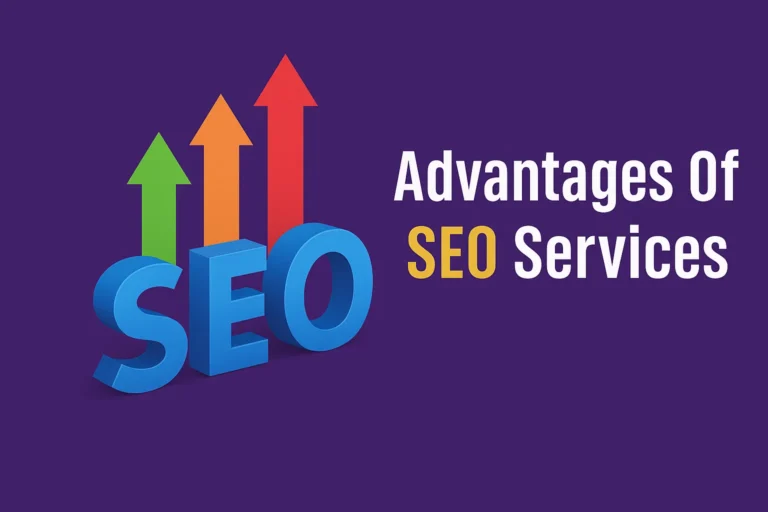
Enterprise SEO vs. Small Business SEO:
Managing search engine optimization (SEO) for a large corporation is vastly different from handling it for a small business. If your company has a massive website, multiple departments, and complex infrastructure, traditional SEO tactics won’t be enough.
This guide breaks down the key distinctions, challenges, and advanced strategies needed for enterprise-level SEO success.
How Enterprise SEO Differs from Small Business SEO
Enterprise SEO focuses on scalability, technical precision, and cross-department coordination, while small business SEO is more straightforward.
Core Differences at a Glance
| Aspect | Enterprise SEO | Small Business SEO |
|---|---|---|
| Website Size | Thousands to millions of pages | Typically under 500 pages |
| Team Structure | Multiple teams (IT, marketing, developers) | Often handled by one person or a small team |
| Technical Complexity | Dynamic URLs, CDNs, APIs, JavaScript-heavy | Simple CMS (WordPress, Shopify) |
| Content Management | Requires approvals & strict workflows | Quick, direct updates |
| Budget & Tools | Enterprise tools (e.g., Botify, BrightEdge) | Basic tools (e.g., Ubersuggest, Moz) |
Why Requires Advanced Strategies
1. Large Websites Face Crawlability Issues
Search engines struggle to index all pages, leading to orphaned or duplicate content.
Solution:
Regular technical audits using tools like DeepCrawl or Screaming Frog.
Optimize XML sitemaps and robots.txt for better crawling.
Use canonical tags to prevent duplicate content penalties.
2. Slow Decision-Making Due to Multiple Stakeholders
Changes require approvals from IT, legal, and marketing teams, delaying optimizations.
Solution:
Establish clear SEO guidelines for all departments.
Use project management tools (e.g., Asana, Jira) to track progress.
3. Technical SEO is Non-Negotiable
JavaScript frameworks, dynamic rendering, and CDNs can break SEO if not configured properly.
Slow page speeds hurt rankings and user experience.
Solution:
Implement server-side rendering (SSR) for JavaScript-heavy sites.
Optimize Core Web Vitals (LCP, FID, CLS).
Use content delivery networks (CDNs) efficiently.
4. High Competition Demands Superior Backlinks & Content
Competing with industry leaders means needing high-authority backlinks and data-driven content.
Solution:
Invest in skyscraper content and expert-led research.
Build links through digital PR, guest posts, and partnerships.
SEO Tools
| Tool Type | Recommended Tools |
|---|---|
| Site Crawling | Screaming Frog, DeepCrawl, Botify |
| Rank Tracking | SEMrush, Ahrefs, Searchmetrics |
| Content Optimization | Clearscope, MarketMuse, Frase |
| Performance Audits | Google Lighthouse, PageSpeed Insights |
Key Takeaways for
✔ Fix crawlability issues – Ensure search engines can index all critical pages.
✔ Streamline workflows – Reduce delays with cross-team collaboration.
✔ Prioritize technical SEO – Optimize site speed, mobile usability, and JavaScript rendering.
✔ Invest in high-quality content – Publish authoritative, data-backed content to outrank competitors
.
Services
onpqage
Looking for expert SEO services to rank higher on Google? SEOAgency1 delivers tailored strategies to drive organic traffic and grow your business. Get started today with proven results!
technical seo
Partner with [SEO Agency 1] for data-driven SEO solutions—from keyword research to backlink building—to grow your business sustainably
Complete 2025 Guide to Dominating Search Rankings
Are you struggling to improve your website’s visibility fast-growing digital market? With unique language preferences, cultural nuances, and evolving search trends, businesses need a data-driven SEO strategy to stay ahead.
This guide covers the latest search engine trends, multilingual SEO best practices, and local optimization techniques to help your enterprise succeed in 2025.
1. The Importance of Arabic SEO and Multilingual Content
The usa’s population is highly diverse, with Arabic as the dominant language for online searches. However, English remains widely used in business and commerce. To maximize reach:
Key Strategies for Multilingual SEO
Optimize for
Implement hreflang tags – Helps Google serve the correct language version to users.
Localize content – Avoid direct translation; adapt messaging for cultural relevance.
Leverage dialect-specific terms – Gulf Arabic differs from Modern Standard Arabic (MSA).
Pro Tip: Use Google Trends USA to identify high-demand Arabic and English search queries.
2. Local SEO vs. Global SEO:
While global SEO follows broad best practices, usa local SEO requires a specialized approach due to:
Cultural and Behavioral Factors
Mobile-first users – Over 92% of usa internet traffic comes from smartphones.
High voice search usage – Many users search in Arabic via Google Assistant and Siri.
Hyper-local intent – Queries like “restaurants near me, Dubai” or “same-day delivery Abu Dhabi” are common.
Comparison:
| Factor | Local SEO | Global SEO |
|---|---|---|
| Primary Language | Arabic + English | Varies by region |
| Search Behavior | High mobile & voice searches | Desktop still significant |
| Key Platforms | Google My Business, Justmop, Zomato | Less reliance on local directories |
| Seasonal Trends | Ramadan, Eid, Dubai Shopping Festival | Generic holiday trends |
Action Step: Optimize for “near me” searches by ensuring your Google Business Profile is complete with location, contact details, and local keywords.
3. Emerging Search Trends for 2025
To stay competitive, businesses must adapt to these 2025 USA search trends:
A. Voice Search Optimization
40% of USA searches will be voice-based by 2025 (Source: MENA Digital Report).
Focus on natural Arabic phrases and question-based queries (e.g., “أين أقرب محل لبيع الهواتف؟”).
B. Video and Visual Search Growth
YouTube and TikTok SEO are rising, especially for younger audiences.
Optimize video titles, descriptions, and Arabic subtitles for better reach.
C. AI and Personalization in Search
Search engines prioritize user intent—create content that answers specific usa-related queries.
Use structured data markup to enhance rich snippets in search results.
Expert Insight: “Brands ignoring Arabic voice search will lose a massive chunk of USA traffic.” – Digital Marketing Strategist, Dubai.
Key Actionable Takeaways
✔ Use both Arabic and English SEO – Cater to bilingual audiences.
✔ Optimize for mobile and voice search – Fast-loading pages and conversational keywords.
✔ Leverage local business listings – Google My Business, regional directories, and industry platforms.
✔ Stay updated on USA trends – Adjust strategies for Ramadan, national holidays, and local events.
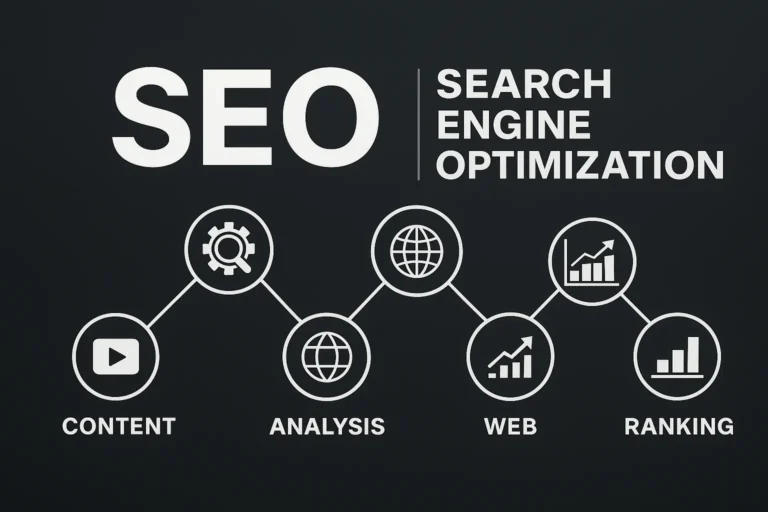
How to Improve Your Large Website’s SEO
Many businesses in the USA struggle with poor search rankings and low website traffic. If your site isn’t attracting enough visitors, you might be missing key SEO techniques tailored for the region.
Why Your Website Isn’t Performing Well in USA Searches
1. Not Optimizing for Mobile Users
Google now uses mobile-first indexing, meaning it ranks sites based on their mobile version first. A slow or non-responsive design hurts your visibility.
How to Fix It:
Test your site with Google’s Mobile-Friendly Tool.
Improve page load speed by compressing images and using caching.
Ensure buttons and text are easy to read on small screens.
2. Failing to Cater to Both Arabic & English Audiences
The USA has a multilingual audience. If your content isn’t available in both languages, you’re losing potential customers.
Best Practices:
Hire professional translators (avoid Google Translate).
Adjust keywords for each
Use hreflang tags to tell Google which language version to show.
3. Not Researching Competitors’ SEO Strategies
If you don’t analyze what’s working for competitors, you’ll fall behind.
What to Do:
Use tools like SEMrush or Ahrefs to find top-ranking keywords.
Study their backlink sources and content structure.
Identify gaps where you can provide better content.
Comparison: Best SEO Approaches for USA Businesses
| Strategy | Benefits | Challenges |
|---|---|---|
| Local SEO | Targets nearby customers, great for physical stores. | Needs regular updates (Google Business Profile). |
| Multilingual SEO | Reaches a wider audience (Arabic + English). | Requires accurate translations & cultural adaptation. |
| Technical SEO | Improves site performance & rankings. | Can be complex without expert help. |
Top SEO Mistakes to Avoid in the USA



Quick & Effective SEO Fixes for



Final Tips for Better USA SEO Results
To improve your search rankings:


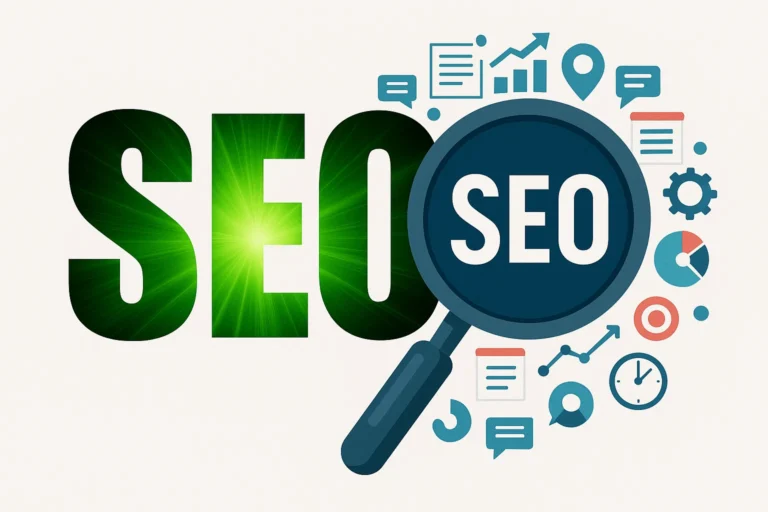
How to Boost You usa Business Website Strategies
Many businesses in the USA struggle with poor search rankings and low website traffic. If your site isn’t attracting enough visitors, you might be missing key SEO techniques tailored for the region.
Why the Website Isn’t Performing Searches
1. Not Optimizing for Mobile Users
Google now uses mobile-first indexing, meaning it ranks sites based on their mobile version first. A slow or non-responsive design hurts your visibility.
How to Fix It:
Test your site with Google’s Mobile-Friendly Tool.
Improve page load speed by compressing images and using caching.
Ensure buttons and text are easy to read on small screens.
2. Failing to Cater & English Audiences
The USA has a multilingual audience. If your content isn’t available in both languages, you’re losing potential customers.
Best Practices:
Hire professional translators (avoid Google Translate).
Adjust keywords for each language
Use hreflang tags to tell Google which language version to show.
3. Not Researching Competitors’
If you don’t analyze what’s working for competitors, you’ll fall behind.
What to Do:
Use tools like SEMrush or Ahrefs to find top-ranking keywords.
Study their backlink sources and content structure.
Identify gaps where you can provide better content.
Comparison:
| Strategy | Benefits | Challenges |
|---|---|---|
| Local SEO | Targets nearby customers, great for physical stores. | Needs regular updates (Google Business Profile). |
| Multilingual SEO | Reaches a wider audience (Arabic + English). | Requires accurate translations & cultural adaptation. |
| Technical SEO | Improves site performance & rankings. | Can be complex without expert help. |
Top SEO Mistakes to Avoid
❌ Ignoring voice search – Many users ask Google or Siri for recommendations (e.g., “Where’s the nearest petrol station in Abu Dhabi?”).
❌ Slow website speed – Users expect pages to load in under 3 seconds.
❌ Duplicate content – Hurts rankings; always publish original, valuable content.
Quick & Effective SEO Fixes
✔ Use long-tail keywords
✔ Optimize for local searches
✔ Get backlinks from websites (local directories, news sites).
Final Tips for Better Results
To improve your search rankings:
✅ Focus on mobile users – Most searches happen on phones.
✅ Create content in English – Cover more potential customers.
✅ Monitor competitors – Learn from their successes and mistakes.
The Future of SEO in the usa: Key Trends for 2025
Feeling overwhelmed by constant Google updates? You’re not alone. Many businesses struggle with dropping rankings, unpredictable algorithms, and keeping up with new trends. But with the right approach, you can future-proof your SEO strategy.
Here’s a clear, easy-to-understand breakdown of the biggest SEO trends in the USA
1. AI Will Change How We Do SEO (But Don’t Panic!)
Artificial Intelligence is not replacing SEO—it’s making it smarter. Here’s how:
AI Content Tools (like ChatGPT & Gemini) help create better, faster content, but Google still rewards human expertise.
Automated SEO Audits spot technical issues (like broken links or slow pages) instantly.
AI-Powered Keyword Research finds hidden opportunities by analyzing real user intent.
“In 2025, AI won’t replace SEOs—but SEOs using AI will replace those who don’t.”
2. B2B Businesses Must Optimize Differently
The B2B sector is growing fast, but generic SEO won’t work. Try these instead:
✅ Focus on “decision-stage” keywords
✅ Create detailed comparison guides (B2B buyers research heavily before purchasing).
✅ Use LinkedIn & YouTube SEO (many professionals start searches there).
3. Google’s “Zero-Click” Searches
Over 50% of Google searches end without a click—because answers appear right on the results page. To compete:
| What Google Shows | How to Get There |
|---|---|
| Featured Snippets | Write clear, concise answers to common questions |
| “People Also Ask” Boxes | Structure content in Q&A format |
| Local Business Listings | Optimize Google My Business with photos & fresh updates |
Pro Tip: Use tools like Ahrefs or SEMrush to find “snippet opportunities” for your industry.
4. Voice Search Will Keep Growing
With more people using Siri, Alexa, and Google Assistant, optimize for:
Natural language queries
Arabic voice search (long-tail keywords in Arabic are a huge opportunity).
Fast-loading pages (voice search favors mobile-friendly sites).
5. Technical SEO Will Make or Break Rankings
Google’s getting stricter about website health. Must-fix issues:
⚠ Page speed: USA users expect pages to load in under 2 seconds.
⚠ Mobile-friendliness (over 60% of USA searches happen on phones).
⚠ Secure sites (HTTPS) (Google warns users if your site isn’t safe).
Simple Checklist for 2025 SEO Success
✔ Use AI tools—but always add human insight.
✔ Optimize for B2B buyers with in-depth guides.
✔ Target “zero-click” searches with snippet-friendly content.
✔ Prepare for voice search (especially in Arabic).
✔ Fix technical errors—speed & mobile matter more than ever.
faqs
1. What is an enterprise in the USA?
Enterprise SEO is a large-scale search optimization strategy for big companies. It helps brands with hundreds or thousands of web pages rank higher in search results in the USA and global markets.
2. How is enterprise SEO different from regular SEO?
Regular SEO focuses on smaller websites. Enterprise SEO handles bigger challenges like multi-location targeting, multilingual content, and advanced technical issues.
3. Why is enterprise SEO important for companies in 2025?
Because competition is growing. More businesses are going online, and enterprise SEO helps big brands keep visibility in both Arabic and English searches.
4. Do companies need Arabic SEO?
Yes. Many USA customers search in Arabic. Optimizing in Arabic helps capture a wider audience and improves trust with local users.
5. Can enterprise SEO improve global rankings for USA companies?
Yes. With the right strategy, usa-based companies can target customers in other countries while keeping strong local rankings.
6. How long does it take to see results from enterprise SEO?
It depends on website size and competition. Most large companies see strong results in 6–12 months with consistent effort.
7. What are common mistakes
Ignoring mobile optimization, skipping technical audits, and not adapting content for both Arabic and English users are common issues.
8. Is PPC still needed if we invest in enterprise SEO?
Yes. SEO builds long-term visibility, while PPC drives instant traffic. Both work well together for brand growth.
9. How do companies choose the right keywords for enterprise SEO?
They use market research, competitor analysis, and tools to find keywords in both Arabic and English with high search volume and low competition.
10. What will change in enterprise SEO by 2025
AI tools will make keyword research faster, search engines will focus more on user experience, and voice search will play a bigger role in rankings.
3D Visualization in Real Estate
Explore how 3D visualization is transforming property marketing, design, and sales through immersive digital experiences.
It's the process of using computer software to create graphical content that has height, width, and depth. Think of it as building a digital model of an object or space that you can view from any angle, just like in the real world.
It starts with 3D modeling, where you build the shape of an object. Then, textures and materials (like wood or glass) are added. Finally, lighting and a virtual camera are set up. The software then calculates a final image or animation, which is called rendering.
It allows buyers to take a virtual tour and truly experience a space, helping them make a confident decision before a single brick is laid.
It's incredibly useful across many fields! Architects use it to design buildings, product developers create prototypes of new gadgets, filmmakers build entire fantasy worlds, and scientists visualize complex data. It's a tool for bringing any idea to life visually.
Because it provides clarity and understanding that 2D images cannot. It eliminates confusion, helps spot potential design problems early, and allows everyone to see exactly the same vision, ensuring we're all on the same page.
First, it greatly improves communication. A 3D model is a universal language that everyone can understand. Second, it saves significant time and money by identifying errors in the digital stage, preventing costly changes during physical construction or manufacturing.
Benefits of 3D Visualization
- Enhanced customer engagement
- Reduced marketing costs
- Faster sales cycles
- Global property showcasing
- Customization before construction
Applications in Real Estate
- Virtual property tours
- Architectural visualization
- Interior design planning
- Urban planning simulations
- Property development marketing
The 3D Visualization Process
- 3D modeling of structures
- Texturing and material application
- Lighting setup
- Rendering process
- Post-production enhancements
